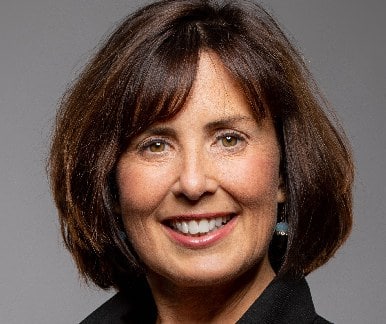As a leader in patient advocacy, I am often asked to speak on the topic of patient centricity and patient advocacy from the biotech/pharma perspective. What do we mean by patient centricity or when we say that patients are at the center of what we do or patients are our guiding star? These are great platitudes and mission statements, but how is patient centricity manifested in the real work that needs to be done?
My thinking has evolved from the obvious, pharmaceutical companies strive to develop transformative therapies to change patients’ lives to a much stronger belief in the real meaning of patient centricity. As partners, we are all working toward participatory medicine. Therefore, patient centricity is really rooted in listening to and learning from patients and caregivers in order to best understand their lived experience. Meaningfully incorporating this insight in all areas of our work must be the cornerstone of participatory medicine for drug development and access.
Companies are organized to deliver the results they get. Therefore, we must build the organization and the framework to be able to take the time to listen to patient and caregiver perspectives, believe what they say to be true, and be willing to adapt our thinking once we have this insight. This requires leaders who bring unique viewpoints to the table and have enough power to influence decisions as well as process to ensure everyone is accountable for this level of collaboration. There is a lot in science that must be rigorous and exact, but there is still room for a human centered, collaborative design approach. We have to invest in and commit to having an interest in building long term relationships.
Recently we met with a family with a rare genetic condition and no available treatment. They have participated in 12 clinical trials. They talked not about the blood draws, MRIs or endpoints. They talked about the seven hours it takes to fly to the trial center; that everyone at the trial center is new to them and not their regular care team; that they leave their three small children at home for every trial visit; that their routine is constantly disrupted; how eating on the road and fast food disrupts their disease management.
This is real life. How can we truly develop a patient centric approach? It means thinking about the whole surround sound of the real life experience from the participant’s perspective and working back from there. Imagine a meet and greet via Zoom with the trial team, a chance for the trial participant to really get to know the team ahead of being in the institution and feeling stressed, a healthy meal delivery service, support for the children at home. For our team that designs and executes hundreds of clinical trials, this was a powerful session and one that will change the way they think about trial design going forward.
Patient centricity also has a positive impact on the employee experience. Every patient interaction is truly an opportunity to listen, learn, and understand. This has the added impact of connecting employees to their purpose. We have to look at these golden engagements as our tangible path to patient centricity, and really value what we learn while striving to hear from all voices across all cultures.
In many sectors of business, the focus on customers and creating an exquisite customer experience drives business decision making and investment. To achieve patient centricity in the world of participatory medicine, we need to assume we can deliver an exquisite customer experience and then define the steps to get there.
Patient centricity means partnering with patients and is closely aligned to the SPM Manifesto. However, in order to deliver on the mission of patient centricity, you must first build the framework, capability and operating model to establish the required accountable behaviors and infrastructure to do the work. We have to look to the future and change old ways of thinking to create communities of experts from disparate fields that can, together, offer transformation.
By creating the organization we need to deliver what we want, we connect employee and patient experiences to narrow in on key insights and moments that matter. We can then make them as meaningful, memorable and measurable as possible. The employee-patient connection gives employees better insights into patient needs. Armed with those insights, employees create better products that serve patients.
Wendy Erler has built her patient advocacy career in many rare disease communities and oncology. She is Vice President of Patient Experience, STAR and Advocacy at Alexion Astra Zeneca Rare Disease, where she is responsible for leading the enterprise innovation model to gather and incorporate patient insights throughout the drug development and commercialization processes. She leads the Global Patient Advocacy function and has responsibility for the advocacy team and patient insights.
Did you enjoy this post? Sign the Manifesto and learn more about becoming a member.







Recent Comments